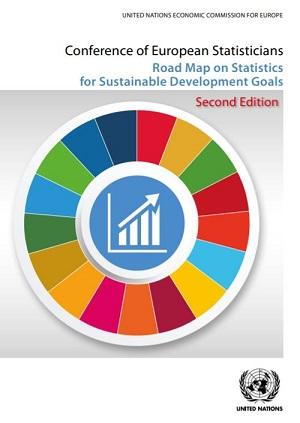The second edition of UNECE’s Road Map on Statistics for Sustainable Development Goals, released today, provides comprehensive guidance for countries to help them strengthen their systems for producing and disseminating data on the SDGs.
In 2015 the world embarked on a journey to the future, to achieve the Sustainable Development Goals.
It is not an easy journey, neither for those most in need of progress nor for those addressing the problems.
When the 17 goals of the 2030 Agenda were adopted, a detailed system of indicators was devised with the help of statisticians to ensure that policymakers, civil society and the world’s public can see where progress is being made and hold governments accountable when progress stalls.
With no fewer than 231 unique indicators, though, national statistical systems have had their work cut out from day one to figure out how each of these indicators can be properly defined, gather the necessary data and disseminate them to those who need them for decision-making.
In the five years since the 2030 Agenda was adopted, much progress has been made among those trying to tackle the statistical challenges. But plenty of them remain and new ones continue to emerge, requiring new approaches and solutions. The new publication, developed by the Conference of European Statisticians’ Steering Group on Statistics for Sustainable Development Goals, builds on and extends the first edition of the Road Map, giving special attention to quality assurance and to the commitment to leave no one behind.
The Road Map covers the wide range of areas in which work is needed to set up and maintain an effective statistical system capable of fulfilling the data needs of the SDGs.
Key messages and recommendations from this new edition are:
1. The global commitment to transforming our world requires a global commitment to reporting and sharing data
Fulfilling the goals requires unprecedented efforts not only in terms of achieving the development targets themselves, but in terms of providing the data to monitor them.
2. Use the global list of indicators as a starting point for global reviews and nationally relevant in-depth analysis
National policies and information needs differ, so monitoring national progress may require country-specific indicators.
3. Create new partnerships for more customized and localized data
Resources are stretched and statistical producers are overburdened. The only way to ensure data are collected and disaggregated on hard to reach or minority groups is to build partnerships and harness innovative resources to fill data gaps.
4. To understand the data, you need to understand how they are collected and compiled
A correct use of data depends on NSOs making available the metadata – a ‘passport’ describing the source, calculation methods, organization responsible for calculation, and limitations.
5. SDG indicators go beyond conventional official statistics
Data and statistics for SDGs are produced both within and outside national statistical systems. Achieving uniform high quality is an ongoing endeavour.
6. Legislative frameworks should grant NSOs access to new data sources
Big data, geospatial data and administrative sources could allow NSOs to provide more granular and timelier data, but access to them and the ways they are used to produce SDG indicators must be clearly regulated.
7. NSOs have a role to play as main information hubs
Official statistics are the cornerstone of national information systems, and NSOs are the central coordination bodies of official statistics.
8. Capacity development should be a continuous process
Strengthening statistical systems will improve a country’s development by allowing better decision-making with evidence-based policies. All countries’ statistical organizations, not only those in developing countries, need to modernize constantly to keep pace with technological change, emergence of new sources and changing information demands.
9. Lessons learned from the COVID-19 outbreak: the need for modernization and innovative solutions
The intense challenges faced by national statistical systems both to continue their core business and to fulfil the new data needs posed by the pandemic mean that it has become an accelerator of innovation. The pandemic has highlighted that statistical capacity development activities should always be viewed as a pathway for the future, not just in crisis situations
10. Cooperation and partnership are key if we are to “leave no one behind”
Strategic partnerships are important to ensure that countries have high quality information complying with international standards and conforming to all legal and ethical requirements, for the benefit of all.
The Road Map is accompanied by a series of case studies that provide details on how countries have dealt with some of the challenges around the production and dissemination of SDG data. Case studies from Armenia, Iceland and Kyrgyzstan, for example, detail how these countries set up their national reporting platforms (NRPs), in line with the recommendations of the first edition of the Road Map, describing the challenges they encountered, and the benefits derived from creating the platforms. UNECE continues to support countries in setting up NRPs and to date more than 40 member States have launched such platforms.
